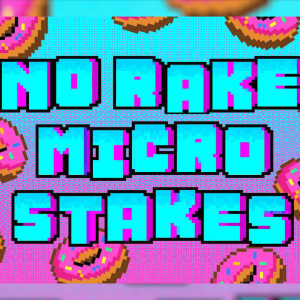The Evolution Of Card Games Throughout History
9 years ago

05 May
In the modern era, playing card games such as poker, blackjack, and baccarat may be just a source of entertainment or a pastime where a few lucky individuals can make some winnings, but card games actually have a long storied history. In fact, the origin of playing cards dates back the the Qing Dynasty of ancient China, and travels westward around the world over the course of more than 1000 years as the original pieces and games changed and morphed into modern day poker. It's a fascinating story and one that lends some interesting backstory to the state of modern day poker.
The history of cards games originates in Central Asia with the use of dominoes. While dominoes had been a pastime for centuries, the advent of papermaking in China led to the creation of paper slips with the traditional domino markings. These were easier the take around and significantly cheaper to make than stone or wooden tiles. While domino games stayed popular in the area, the paper slips, and papermaking itself, spread west and soon other decks of paper cards were being made. The first stop westward was Korea. Instead of the traditional domino cards in China, the Koreans made a new deck, one with 8 suits of 10 cards each with a general as the highest card in each suit. In fact, it is generally accepted that the Koreans invented the idea of card suits, albeit, not the ones we use today.
Playing cards stay relegated to Eastern Asia for hundreds of years, until some time around 1000 A.D when two Chinese papermakers were captured in a battle between the Chinese and the Persians. They were taken back to Samarkand, the Persian capital at the time, and made to divulge the secrets of paper printing. Paper playing cards soon followed, along with new decks and new suits.
It took another 300+ years before cards wandered into Europe. It is generally believed that they were brought either by merchants or by crusaders coming back from Israel. Regardless, they became incredibly popular around the beginning of the European Renaissance. This was actually an incredibly convenient time for cards to arrive as the European populace at large was on a big upswing in terms of both money and culture. With more money, people had more time to devote to leisure activities and pleasure. Card games were a perfect way to spend an evening drinking with friends. While hundreds of games developed, the most popular were, without a doubt, Vingt-et-Un (21), Primero, and Poque.

The 1800’s
The first major game to make an appearance stateside was probably Pokue, a French vying game that would eventually develop into Poker. At the time, however, the game still had a ways to go before it changed into what we know it as today. For example, the decks used by Poque players probably didn't have a full 52 cards. They also had a simpler hand ranking system that, among differences, didn't have the full houses at All!
The game 21, which was highly popular in Europe, came over to the Americas a little later, by way of traders and merchants making port at a popular southern destination in the U.S., New Orleans. The game became extremely popular there, and it was actually the U.S who coined the name blackjack. The new name caught on, and eventually went on to replace 21 and the original version Vingt-et-Un.
Blackjack as we know it today is a hugely popular card game, but it has changed dramatically since the original 21. Although the game was vastly popular in Europe first , the U.S. is responsible for the rules of pay that we know today including the rules for how the dealer plays, and the most attractive pay-out which offers a bonus to players who receive an ace of spades and a black jack.Even now, after many years and many players, only a few are skilled in the art, and too many people can be seen making the same mistakes which are common to new players.
As well as the game blackjack, the U.S. also invented the joker. It originated around 1870 as the highest card in the game Euchre which was most commonly known as ‘Juker’. By the 1880’s the card evolved into the joker card we know today with images depicting jesters and clowns.

Rise of The Gambling Industry
We now make a big jump to the 1930’s, in the state of Nevada in 1931, where freshman Nevada State Assemblyman Phil Tobin introduced the Assembly Bill 98 which allowed for playing cards to be used for wide-open gambling. Once all its lawfulness was established, there was a great need to have game standards and controls in place to regulate the games and ensure that players were getting into a fair gamble. The 1800's had seen the advent of the professional card sharp (cheat) and people knew that a system needed to be put into place to protect the common player.
Tobin's legislation allowed the rise of the gambling industry and regulated casinos. The first licensees to take advantage of the legalized gambling were Boulder Club, Las Vegas Club, Exchange Club, and Northern Club. The majority of them offered bingo parlors, card rooms, and small casinos.

Throughout the 1900’s
Throughout the 1900’s there was significant change in the world of cards, especially during the 1940’s after the Second World War, as proper gambling operation was beginning to take hold. One of the most active areas that was beginning to emerge was the Las Vegas Strip. The Flamingo, a once popular club, had to be sold and the new owner reopened it as a casino in 1946.
Recognizing the more lucrative aspects of owning a gaming house, a number of big players started settling down in the area. After that, in the 1960’s and 70’s the most famous and popular casinos began to open, including the Circus Circus Casino and the Monte Carlo, as many other hotels and casinos. The Las Vegas Strip was born and with each year, casinos began to expand and add more and more different card games, including poker and baccarat.

The Modern Era
Card games have had a long history and many casinos are still hugely popular today. TThe biggest change we have seen in the modern era is the development of electronic card games. In 2003 the eCommerce andOnline Gambling Regulation and Assurance (ECOGRA) authority was created to provide regulations over the online gambling industry and since then it has continued to grow.
Online casinos thrive on a massive scale, with over 5.8 million Brits alone visiting online gambling sites. In most recent trends, gamblers can now play their favorite live dealer games, not just on their computers, but on their phones and other electronic devices, as many casino brands have already developed mobile apps. While some question these developments or critique them for straying away from the classic game, we know that cards have changed a whole lot since their invention more than 1300 years ago.
With such a storied and weighty past, it seems highly unlikely that any events of the modern age, Black Friday inclusive, could really put a dent in one of the oldest pastimes the world has ever known.







Comments
You need to be logged in to post a new comment